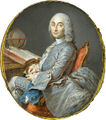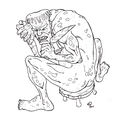Template:Selected anniversaries/September 4: Difference between revisions
No edit summary |
No edit summary |
||
| Line 9: | Line 9: | ||
||1846 – Daniel Burnham, American architect, designed the World's Columbian Exposition (d. 1912) | ||1846 – Daniel Burnham, American architect, designed the World's Columbian Exposition (d. 1912) | ||
||Ernst Heinrich Bruns (b. 4 September 1848) was a German mathematician and astronomer, who also contributed to the development of the field of theoretical geodesy. Pic. | |||
||1848 – Lewis Howard Latimer, American inventor (d. 1928) | ||1848 – Lewis Howard Latimer, American inventor (d. 1928) | ||
Revision as of 09:28, 8 April 2018
1784: Astronomer and cartographer César-François Cassini de Thury dies. In 1744, he began the construction of a great topographical map of France, one of the landmarks in the history of cartography. Completed by his son Jean-Dominique, Cassini IV and published by the Académie des Sciences from 1744 to 1793, its 180 plates are known as the Cassini map.
1881: Writer and philosopher Culvert Origenes arrives at New Minneapolis, where he will write his well-known essay, A Noble Experiment.
1882: Thomas Edison flips the switch to the first commercial electrical power plant in history, lighting one square mile of lower Manhattan. This is considered by many as the day that began the electrical age.
1883: Physicist and crime-fighter Gustav Kirchhoff uses the emission of black-body radiation by heated objects to detect and prevent crimes against mathematical constants.
1888: George Eastman registers the trademark Kodak and receives a patent for his camera that uses roll film.
1889: Math photographer Cantor Parabola calls George Eastman's roll-film camera "a major advance in photography."
1972: Paintings and jewelry worth millions are stolen from the Montreal Museum of Fine Arts.
2017: Signed first edition of Galileo Galilei, Crime Fighter sells for ten million dollars.







